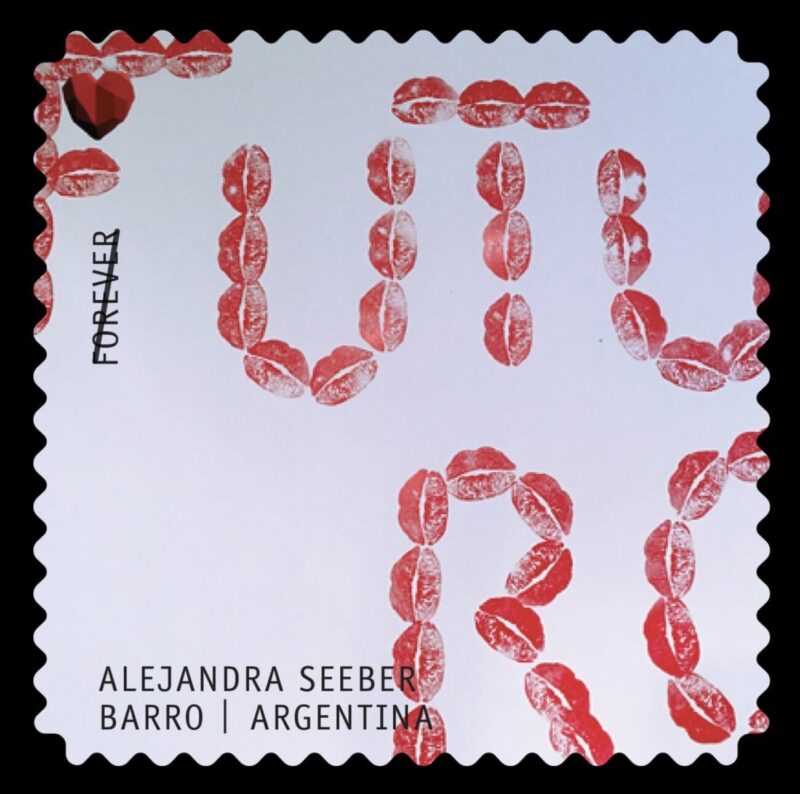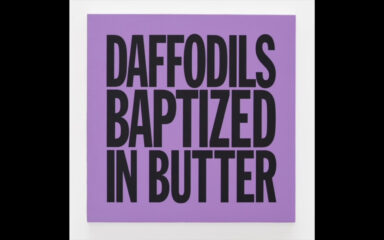WE CAME BACK TO THE MEMORY OF AN OLD COMMON RITUAL WITH 50 INTERNATIONAL ARTISTS CREATING STAMPS AS RESISTANCE ARTWORKS
Text by Fiammetta Cesana
Do you remember that time when during a trip the first concern for our dear ones was finding a suggestive postcard of the place, writing something down in those few lines available that would tell the beauty of the experience away from home and at the same time the nostalgia for who would read us… and then, finally, licking the back of a stamp and sticking it with satisfaction next to our written words?
Being born in the 90s and having known that essential travel ritual very well, I can say that at 11, realizing that the stamp I my self had licked and stuck would be able to send my thoughts to those I carried in my heart, was truly magical. It made me feel great and important, halfway between the romanticism of a Renaissance woman far from her beloved and the repetitive resolve of a postal worker (both included in the list of my favorite roles played in games at that age).
Bringing back to mind those sweet and empowering moments, the news that 50,000 sticker stamps are printed as a new art form of resistance, really thrilled me. It is the New York non-profit TRANS’s project involving 50 international artists and institutions that thanks to the curation of Sandra Antelo-Suarez have created a totally unique artistic manifesto, entitled “These Times”. Each of them, Latin Americans as well as Spanish, Portuguese, German and Japanese, has designed a stamp which turned into a true artwork, aimed at both honoring those we sadly have lost because of the pandemic and at creatively urging to the vote, that this year will bring Americans back to the post offices.

For the first time since the Coronavirus’ outbreak, we see the involvement of so many talents and institutions from the global art landscape to attempt a different approach, moving away from the streets and the so-called ‘cancel culture’ which brings to the destruction of ancient monuments in sign of protest, to experience instead a dissident creative action that uses past cultural means to change the present.
“It’s about creating grassroots structures that, along with museums, artists and art galleries, create an economy of response.” Suarez continues “I wanted to create a response, thinking about how culture and the art world could respond.”
“The art world is so much about money, people forget the simplicity of a stamp.”
In addition to being showcased through social media, they also come out in stickers format in this month’s issue of Frieze art magazine (50,000 stickers will be printed overall). Each design of these stamp artworks is bearer of a particular artistic technique and a strong political message questioning the crisis of these tough times. From the ‘NO’ to power by Santiago Serra to the ‘FUTURE’ made up of kisses by Alejandra Seeber who worked with her 11-year-old daughter to make it (who knows how great and important I’d have felt if at her age my stamp had become a weapon for fighting injustices).

An object, the stamp – which, in all its various fantastic drawings that we used to collect as children, depicting from historical characters to landscapes to everyday tools, has gradually gone into disuse, since now to send an envelope or a package the black grates of a barcode are enough – today returns to the fore of the art’s and society’s stage to remind us how much our contribution represents the heart of change. These small-container but large-content artworks have no stamp value with the postal system, but thanks to them we send our thoughts to those who left us during the darkest and most controversial battle of these times, and we stick on our conscience a fundamental imperative to win it: to protect democracy by voting.
“I told them (the artists) to imagine their stamp has the power to end injustice in the world. It’s up to the people, not the politicians, to vote, to change the system” Suarez said.


